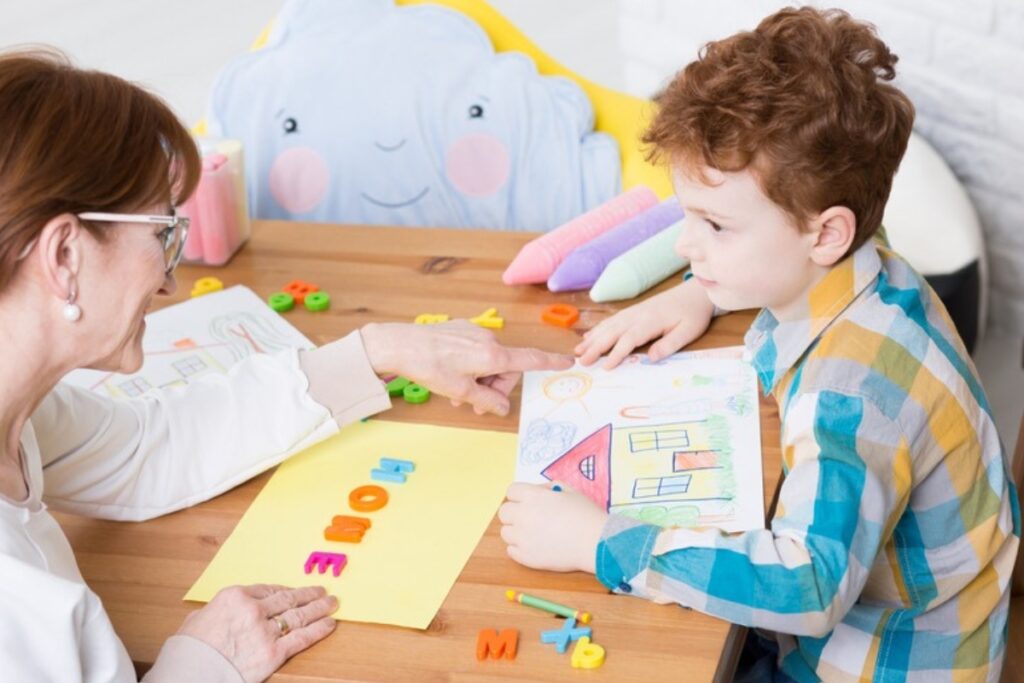What Does Therapy Look Like?
The initial session is used to gather information. Although this does not result in a formal report, it allows the therapist to conceptualize a child’s current needs, understand the factors that are contributing to the problem experienced in the present day, whether a child meets the criteria for a psychological diagnosis (if seeing a child psychologist), and what type of therapy approach(es) can be helpful in alleviating the symptoms. Though new information will arise through therapy and needs are continuously re-assessed, this initial phase provides a good starting point to establish a working relationship with families, and provides an overall picture to parents so they can better understand what their child is experiencing and what is the recommended treatment. Through discussion, parents and clients engage in planning the goals for therapy together.
What Techniques Does A Child Therapist Use?
Therapy techniques that a child therapist uses depend on the age of the client. Games are often used with young children while teenagers feel more comfortable talking when they feel they can trust their therapist. The level of parent involvement also depends on the age of the child and the issues being addressed in therapy. For instance, treating children under the age of 6 years old often includes a family approach as young children are reliant upon their parents for greater support. This may include discussions, games, and/or drawings. However, using games during therapy is different from traditional play therapy. Traditional play therapy can be done in individual sessions or family sessions with one or more family members. Play therapy is used with younger children as they communicate more naturally through play. Feelings and internal conflicts will emerge through their play over time.
What Does Therapy For Children Involve?
Therapy for children may involve parent sessions when support with parenting strategies is needed. Individual therapy with school-aged children may include periodic check-ins with parents for updates and learning strategies to support children at home, while individual therapy with teenagers involves less parent involvement in order to maintain confidentiality and comfort. In some situations, family therapy is used to address communication and family dynamics that contribute to an individual’s symptoms and challenges.
There is often an urge to rush therapy to make the situation better quickly. Some issues can be treated in shorter-term therapy while others require long-term therapy. The length of treatment depends on several factors including the severity of the presenting concern(s), child’s age, treatment approach, family dynamics, and the frequency of sessions.
Comfort is one of the most important aspects of therapy, regardless of the age of the client. Child therapists strive to listen to the patient’s concerns, provide knowledge, and operate in a transparent and collaborative manner. This sets the tone not just for the now, but for the future as well, as people need support at different times in life. Getting older brings new life stages, developmental milestones, and changes to family dynamics. A child who was seen briefly at the age of 5 years old for the treatment of enuresis (involuntary urination) may return several years later for symptoms of school-related anxiety, or parents’ divorce.
How Can A Child Therapist Make An Impact?
A positive experience with a child therapist at a young age can alleviate symptoms and show children and their parents that seeking support and doing therapy is not a failure. Rather, it is a recognition that changes can be made and provide people with confidence that they can manage the ups and downs of life, because – let’s face it – life is full of them. It will also teach children that seeking support from others is normal, perfectly okay and that therapy is available and helpful. If you think that you, your children, or your family may benefit from extra support, know that you are not alone and it may help to meet with a child psychologist for some feedback.

